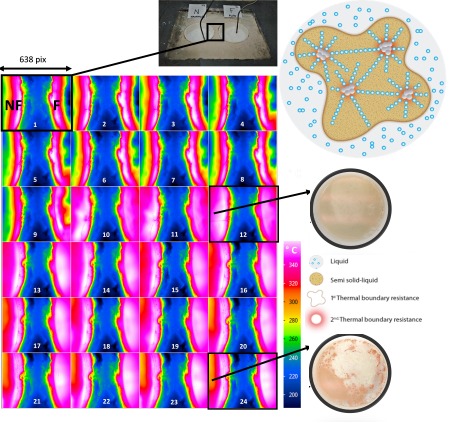Thermal energy storage or heat transfer materials are essential for a large number of applications; from renewable energy to the medicine field. Therefore, research in high-performance materials is necessary for the development of high-efficiency technologies. In recent years, the so-called nanofluids (colloidal systems of nanoparticles in suspension) have emerged with improved thermo-physical properties (i.e. increases up to 30% of specific heat capacity).
Despite the great potential of nanofluids, we are still far away from understanding fundamental questions concerning them. Therefore, it is necessary to create a theoretical framework that helps to exploit its potential.

A recent paper published at Scientific Reports a team from the Design and Optimization Process and Materials Center (DIOPMA) and the Institute of Theoretical and Computational Chemistry (IQTCUB) has demonstrated experimentally for the first time, the main phenomena involved in the abnormal increase in heat capacity in nanofluids. Through infrared thermography, infrared spectroscopy and differential scanning calorimetry (DSC), was identify the formation of liquid-solid interfaces originated between the nanoparticle surfaces and the fluid medium, due to the formation of a high surface layer at higher temperatures.
The formation of solid-liquid interfaces directly influences the increase in the heat capacity of the system, increasing the system entropy. Therefore, this study helps to take a step forward in the field of nanofluids and their application.
Authors: Adela Svobodova, Alejandro calderón, Camila Barreneche, Pablo Gamallo, A.Inés Fernández
https://doi.org/10.1038/s41598-021-84292-9
Research category: Energy
